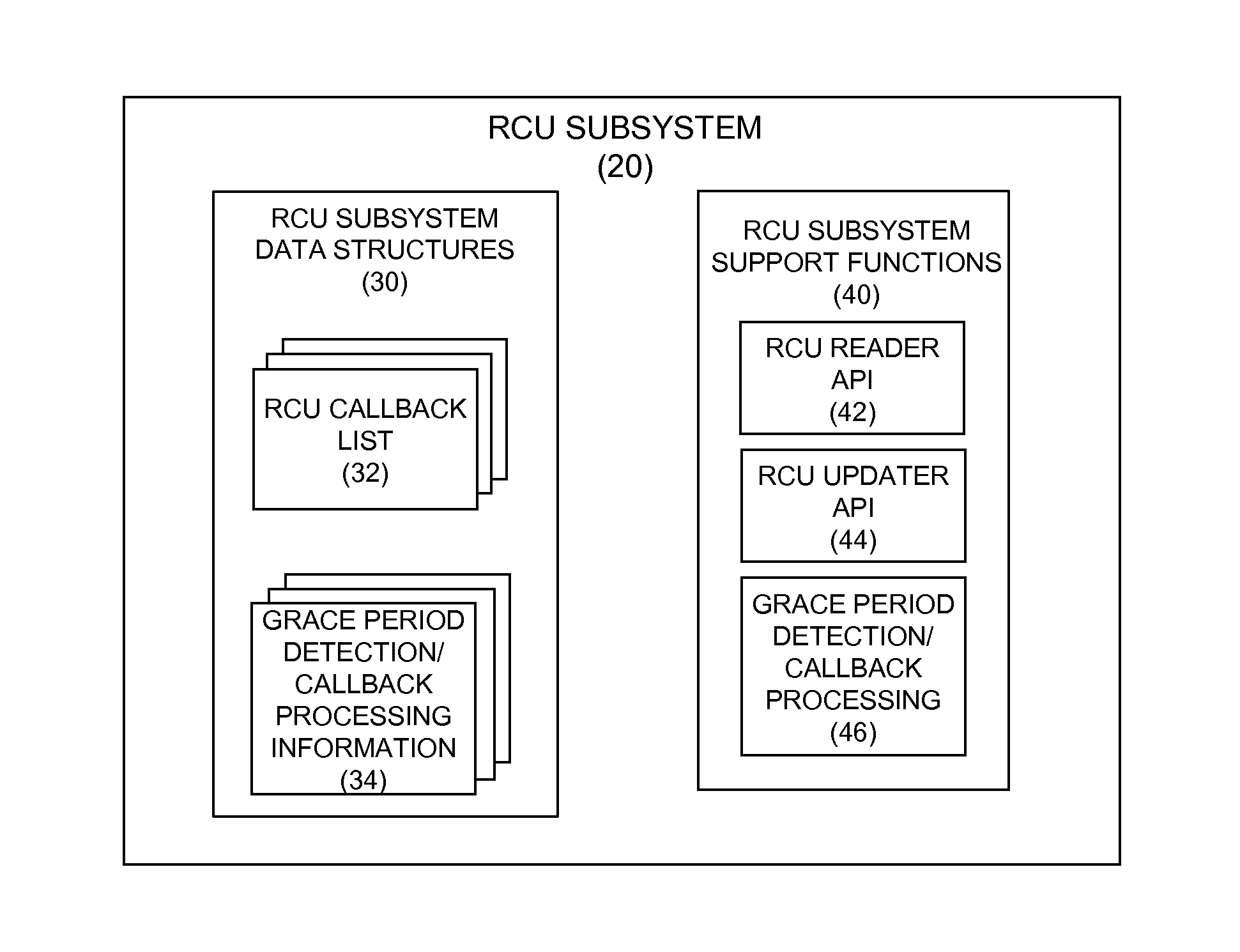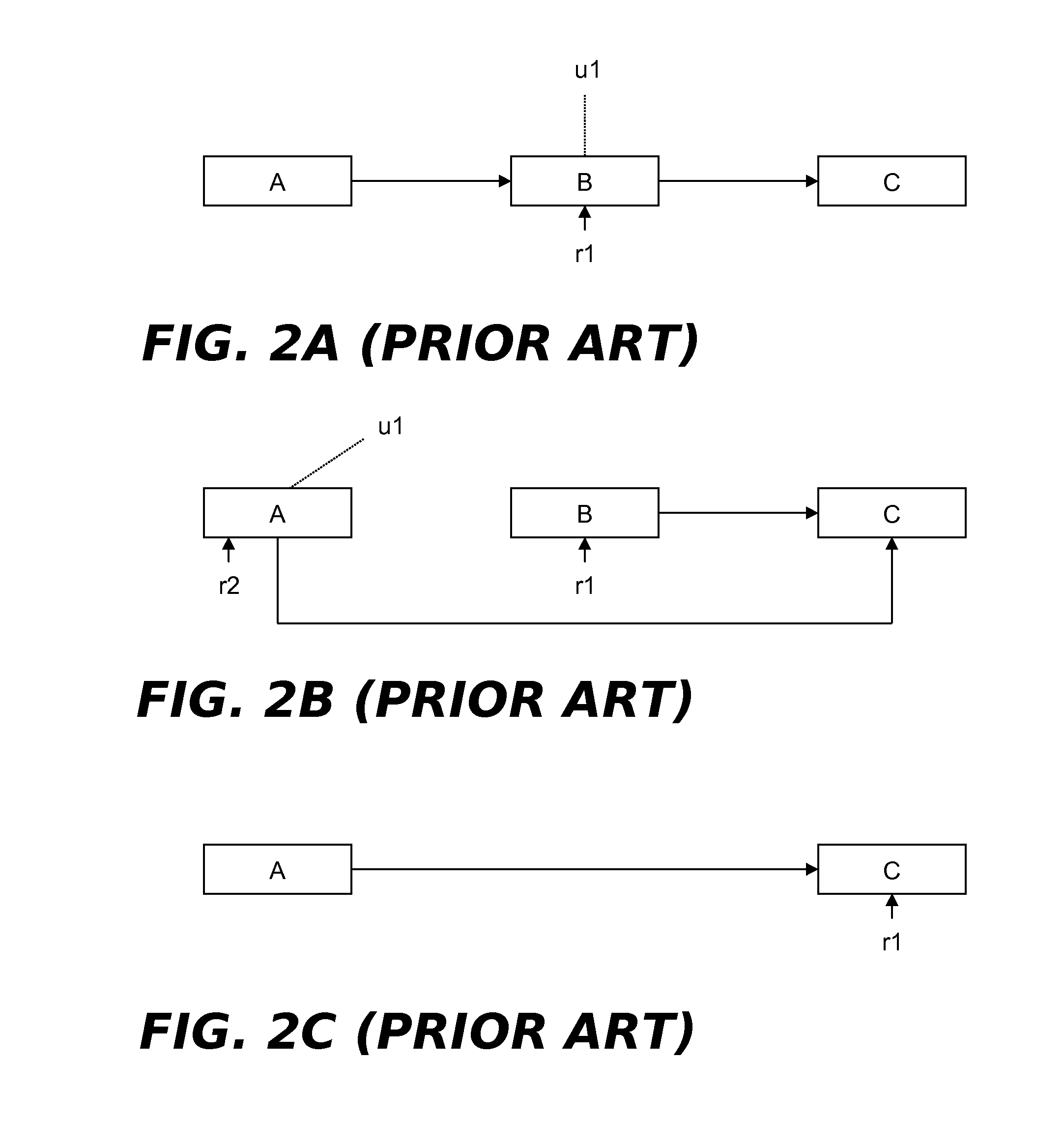Expedited module unloading for kernel modules that execute read-copy update callback processing code
a module and module technology, applied in the field of computer systems and other directions, can solve the problems of rcu_barrier( ) primitives that can delay module unloading, read-side lock acquisition would be quite burdensome, and require more read-side overhead
- Summary
- Abstract
- Description
- Claims
- Application Information
AI Technical Summary
Benefits of technology
Problems solved by technology
Method used
Image
Examples
Embodiment Construction
[0038]Turning now to the figures, wherein like reference numerals represent like elements in all of the several views, FIGS. 4 and 5 respectively illustrate example uniprocessor and multiprocessor computing environments in which the expedited module unloading technique disclosed herein may be implemented. In FIG. 4, a uniprocessor computing system 2 includes a single processor 4, a system bus 6 (or other interconnection pathway) and a program memory 8. A conventional cache memory 10 and a cache controller 12 are associated with the processor 4. A conventional memory controller 14 is associated with the memory 8. As shown, the memory controller 14 may reside separately from processor 4 (e.g., as part of a chipset). Alternatively, the memory controller 14 could be integrated with the processor 4 (as is known in the art). In FIG. 5, a multiprocessor computing system 2A includes multiple processors 41, 42 . . . 4n, a system bus 6, and a program memory 8. There are also cache memories 10...
PUM
 Login to View More
Login to View More Abstract
Description
Claims
Application Information
 Login to View More
Login to View More - R&D
- Intellectual Property
- Life Sciences
- Materials
- Tech Scout
- Unparalleled Data Quality
- Higher Quality Content
- 60% Fewer Hallucinations
Browse by: Latest US Patents, China's latest patents, Technical Efficacy Thesaurus, Application Domain, Technology Topic, Popular Technical Reports.
© 2025 PatSnap. All rights reserved.Legal|Privacy policy|Modern Slavery Act Transparency Statement|Sitemap|About US| Contact US: help@patsnap.com



